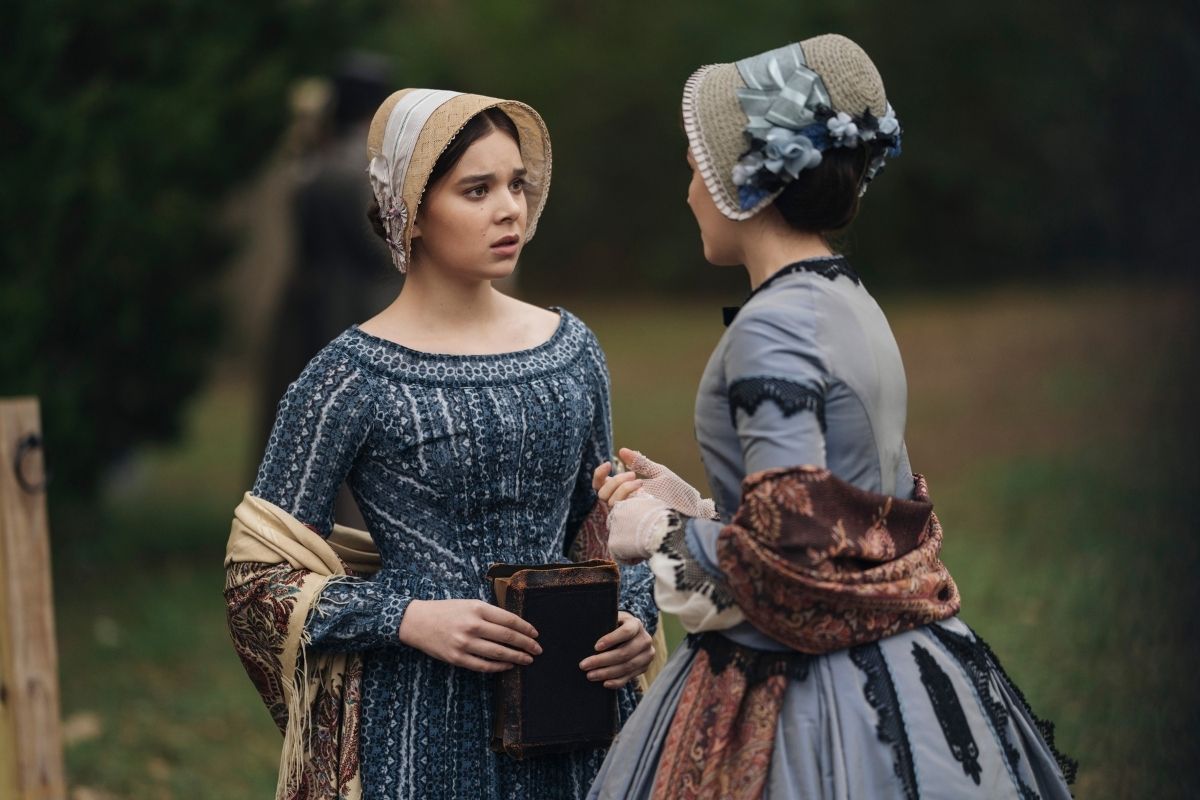Apple TV+’s Dickinson Suffers From LGBTQ+ Colorism and It Shows

AppleTV+’s Dickinson, like many shows that have come before it, suffers from colorism, and if we don’t confront it head on, we’ll be stuck in a preferential state of things where light skin is good skin. Defined as a “prejudice or discrimination especially within a racial or ethnic group favoring people with lighter skin over those with darker skin,” colorism benefits those of lighter skin tones, and with the rise of LGBTQ+ representation on our screens, I’ve noticed that colorism has also found its way into this space.
This show, starring Hailee Steinfeld, is one of the most creative period dramas I’ve ever watched, and each episode builds on its complex female narratives. I fell in love with Steinfeld and came to appreciate Ella Hunt, but like most shows on TV, they also decided to leave a legacy behind where the light-skinned actors get most of the lines, screentime, and the main love story. To clarify, I don’t think what Dickinson is doing is done with malicious intent, but somehow that makes it worse. It’s an unconscious bias.
Kudos to Dickinson for casting Steinfeld as the lead. She’s White, Asian, and Black. But she’s also one of the many people who benefit from a stereotypical rendering of what people of color look like because of a subconscious preference for lighter skin. That right there sets a dangerous precedent where young women of color feel alienated, alone, and lost because the woman of color that they see onscreen is still not who they see in the mirror or around them in their day to day lives.
Colorism is without a doubt global, also present in shows like Wynonna Earp, Supergirl, and The Bold Type. If you’re a light-skinned woman of color, you are given the juicy stories, the sweeping romances, or the complicated but rewarding development. This is seen in the way that shows market these couples, write them within the context of the show itself, and in the manner that fans flock to light-skinned pairings.
And you would think that, in a community that understands suffering and prejudice, we’d be more kind, considerate, and uplifting when it comes to all LGBTQ+ stories. But the reality is that studios think skin color isn’t an issue they should tackle because these queer characters are already dealing with so much when it comes to just telling LGTBQ stories, and that’s all sorts of wrong.
LGBTQ+ people, and their stories, are full of nuance. And no matter how much you try to erase it, brush it off, or act like it’s not part of the story, skin color matters and changes the experiences of those that are portrayed onscreen. And the only way that we are going to battle this, the only way we are going to uplift LGBTQ+ stories like those of Anissa Pierce and Grace Choi on Black Lightning, is by listening.
Stop and understand that your opinion or view of the world might not be the same as others’. Stop and realize that colorism has prevented true diversity from blossoming in the LGBTQ+ community and the stories that are told about us, just like it has in most fiction. And stop and look at how you perceive the world, and the ships you gravitate to, as a means of understanding why queer people are tired of seeing another light-skinned couple on TV or in the media they consume.
(image: Apple TV+)
Want more stories like this? Become a subscriber and support the site!
—The Mary Sue has a strict comment policy that forbids, but is not limited to, personal insults toward anyone, hate speech, and trolling.—
Have a tip we should know? tips@themarysue.com